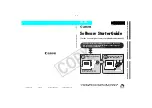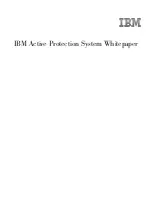
LLDP Agent
Issue 2 July 2005
153
LLDP Agent
LLDP Agent Overview
IEEE 802.1AB Link Layer Discovery Protocol (LLDP) simplifies troubleshooting of enterprise
networks and enhances the ability of network management tools to discover and maintain
accurate network topologies in multi-vendor environments. It defines a set of advertisement
messages, called TLVs, a protocol for transmitting and receiving the advertisements, and a
method for storing the information contained in the received advertisements.
The LLDP protocol allows stations attached to a LAN to advertise information about the system
(such as its major capabilities and its management address) and information regarding the
station's point of attachment to the LAN (port ID and VLAN information) to other stations
attached to the same LAN. These can all be reported to management stations via IEEE-defined
Simple Network Management Protocol (SNMP) Management Information Bases (MIBs).
LLDP information is transmitted periodically. The IEEE has defined a recommended
transmission rate of 30 seconds, however, the transmission rate is adjustable. LLDP devices,
after receiving an LLDP message from a neighboring network device, stores the LLDP
information in an SNMP MIB. This information is valid only for a finite period of time after TLV
reception. The time is defined by the LLDP Time to Live (TTL) TLV value that is contained within
the received packet, unless refreshed by a newly received TLV. The IEEE recommends a TTL
value of 120 seconds, but you can change it if necessary. This ensures that only valid LLDP
information is stored in the network devices and is available to network management systems.
LLDP information is associated with the specific device that sends it. The device itself is
uniquely identified by the receiving party via both received chassis ID and port ID values.
Multiple LLDP devices can reside on a single port, using a hub for example, and all of the
devices are reported via MIB. You can enable (Rx and TX, Rx or Tx) or disable LLDP operation
on a per-port basis.
Supported TLVs
Mandatory
●
End-of-LLDPDU
●
Chassis ID
●
Port ID
●
Time to Live
Optional
●
Port description
Summary of Contents for C360 Manager
Page 17: ...Issue 2 July 2005 17 Section 1 Avaya C360 Overview...
Page 18: ...18 Installation and Configuration Guide Avaya C360 Multilayer Stackable Switches version 4 5...
Page 29: ...Issue 2 July 2005 29 Section 2 Installing the C360...
Page 30: ...30 Installation and Configuration Guide Avaya C360 Multilayer Stackable Switches version 4 5...
Page 91: ...Issue 2 July 2005 91 Section 3 Avaya C360 Configuration...
Page 92: ...92 Installation and Configuration Guide Avaya C360 Multilayer Stackable Switches version 4 5...
Page 211: ...Issue 2 July 2005 211 Section 4 Troubleshooting and Maintaining the Avaya C360...
Page 212: ...212 Installation and Configuration Guide Avaya C360 Multilayer Stackable Switches version 4 5...
















































